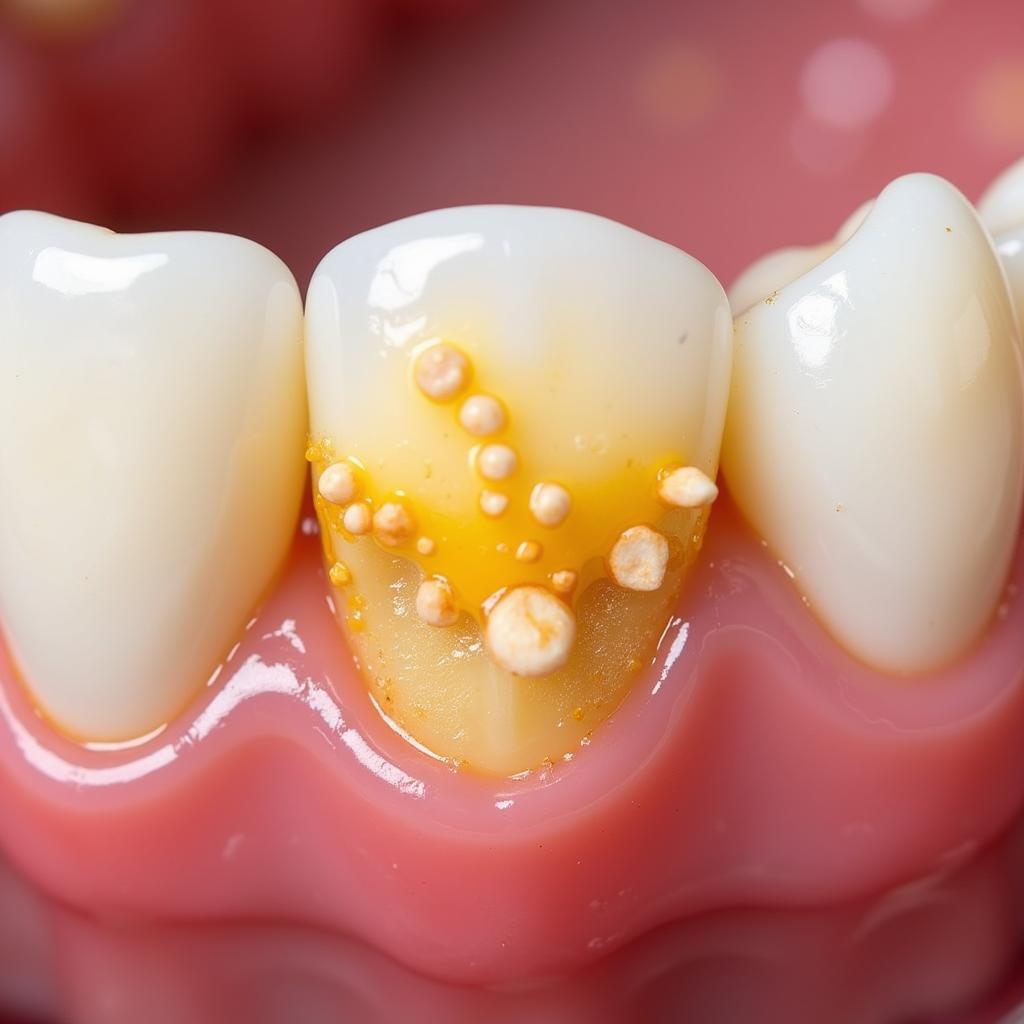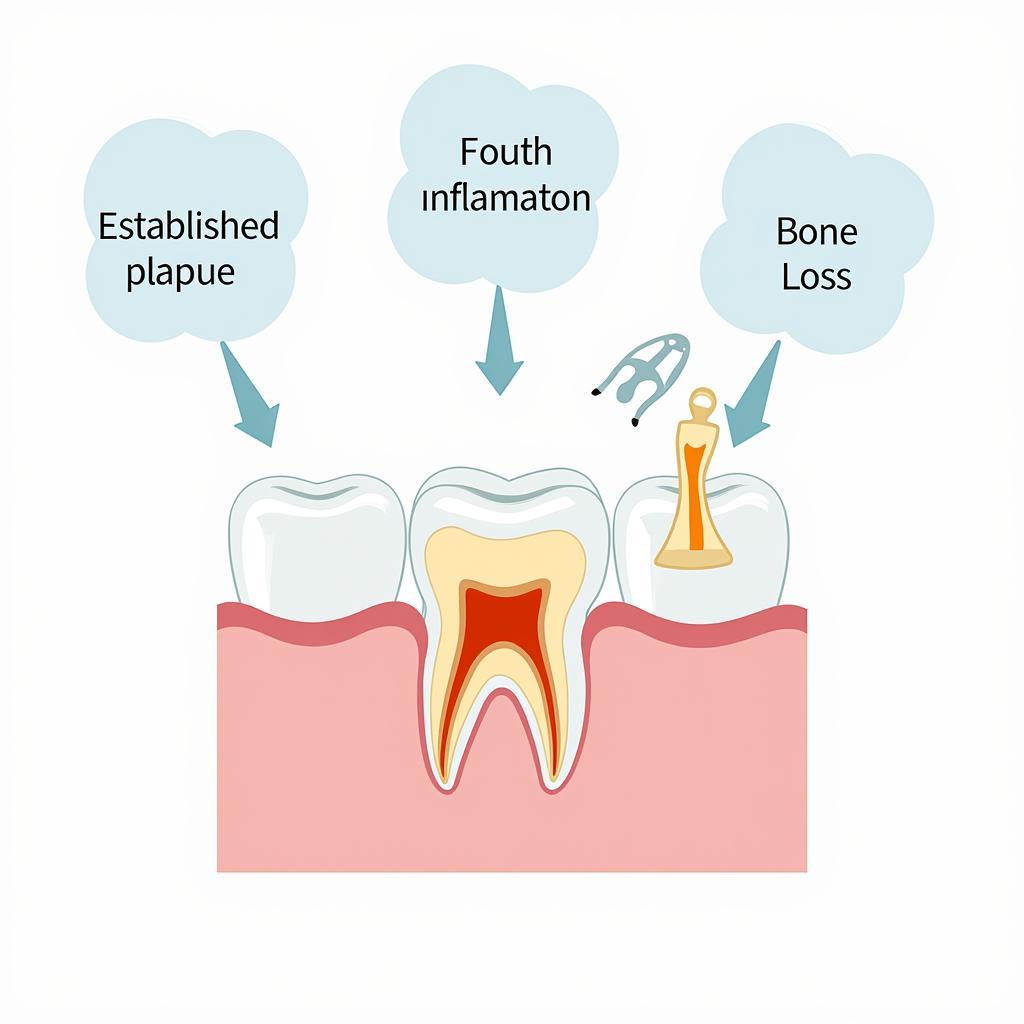Established Plaque: What it Means and How to Prevent it
October 20, 2024Established Plaque, a common dental concern, refers to a sticky film that builds up on teeth over time. This film, composed of bacteria, food debris, and saliva, can lead to a range of oral health issues if not addressed properly.
 Close-up view of established plaque on teeth
Close-up view of established plaque on teeth
Understanding Established Plaque
When we consume food, particularly sugary and starchy items, the bacteria in our mouth feast on these remnants. This process produces acids that erode tooth enamel, the protective outer layer of our teeth. Over time, if not removed, this combination of bacteria, acid, and food particles hardens into a tough deposit known as established plaque.
Why is Established Plaque a Problem?
Established plaque poses a significant threat to oral health for several reasons:
- Tooth Decay: The acids produced by plaque bacteria gradually dissolve tooth enamel, leading to cavities.
- Gum Disease: If left unchecked, plaque can irritate the gums, causing gingivitis (inflammation) and potentially progressing to periodontitis, a more serious infection that damages gums and supporting bone.
- Bad Breath: The bacteria in established plaque release volatile sulfur compounds, resulting in persistent bad breath.
- Tooth Discoloration: Established plaque can also contribute to teeth staining, making them appear yellow or brown.
 Illustration showing the impact of established plaque on teeth and gums
Illustration showing the impact of established plaque on teeth and gums
Preventing Established Plaque: Your Guide to a Healthy Smile
Fortunately, preventing established plaque involves straightforward, everyday practices:
- Brush Thoroughly: Brush your teeth twice a day using a soft-bristled toothbrush and fluoride toothpaste. Ensure you reach all tooth surfaces, paying special attention to the gum line.
- Floss Daily: Flossing once a day is crucial for removing plaque and debris from between teeth and under the gum line where your toothbrush can’t reach.
- Rinse with Mouthwash: Using an antimicrobial mouthwash after brushing can help kill bacteria and freshen breath.
- Limit Sugary Foods and Drinks: Reduce your intake of sugary and starchy foods and beverages, as they fuel the bacteria that produce plaque.
- Regular Dental Checkups: Visit your dentist every six months for professional cleanings and checkups.
Expert Insight
“Many people underestimate the importance of daily oral hygiene in preventing established plaque,” says Dr. Emily Carter, a renowned dental hygienist. “Consistent brushing, flossing, and professional cleanings are essential for maintaining healthy teeth and gums.”
Conclusion
Established plaque, while a common dental issue, is entirely preventable with consistent oral care. By adopting a proactive approach to your dental hygiene, you can significantly reduce the risk of cavities, gum disease, and other problems associated with established plaque. Remember, a healthy smile is a reflection of overall well-being.
For personalized advice and to schedule an appointment, please contact us at Phone Number: 0963418788, Email: [email protected] Or visit our address: 2M4H+PMH, Phường Nghĩa Thành, Gia Nghĩa, Đắk Nông, Việt Nam. We have a 24/7 customer care team ready to assist you.